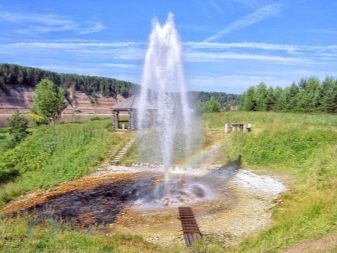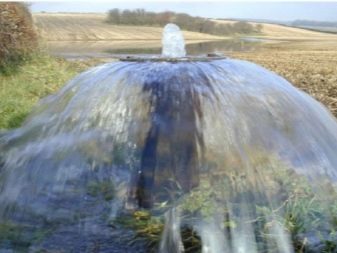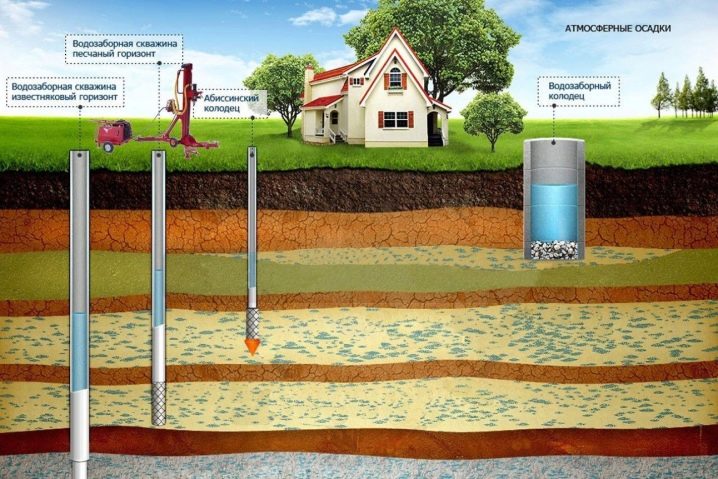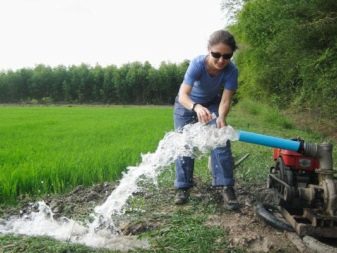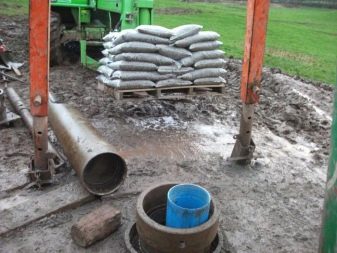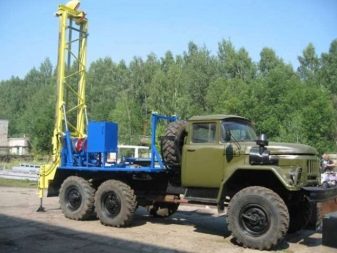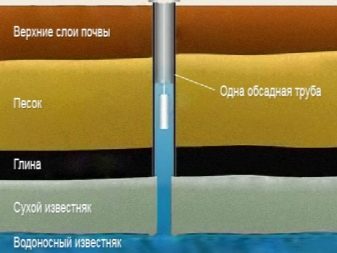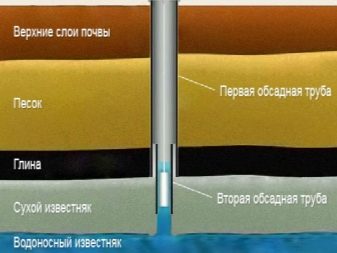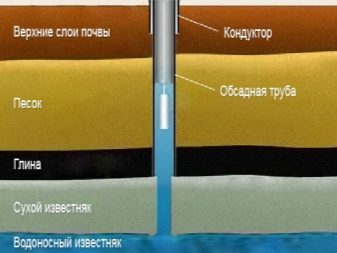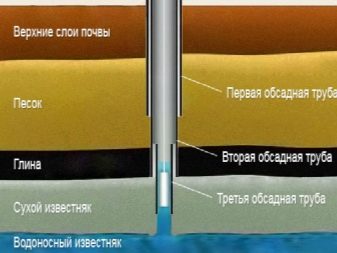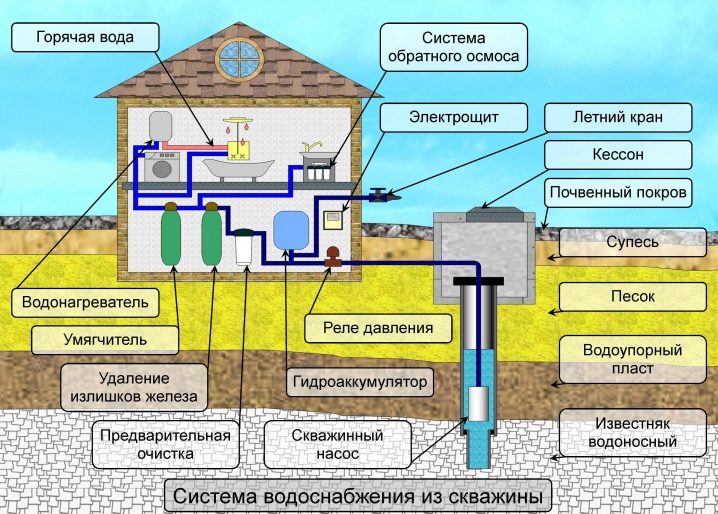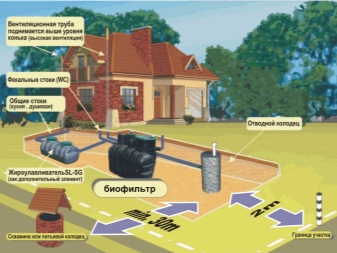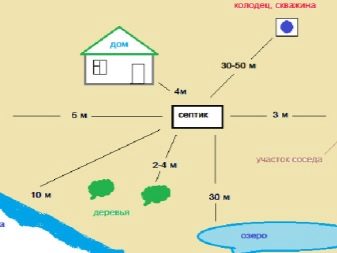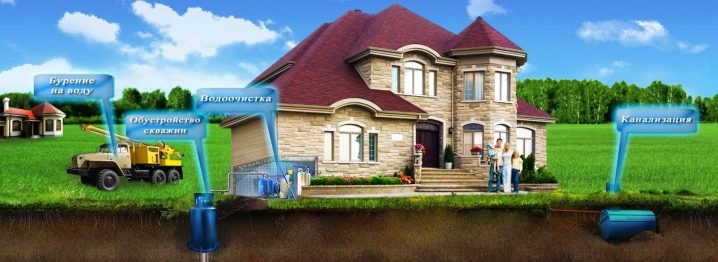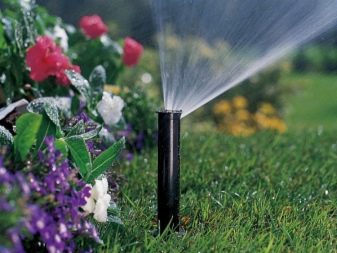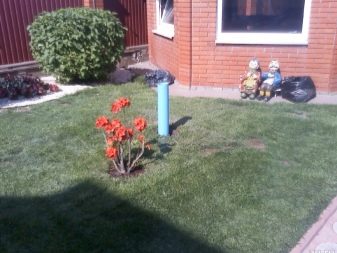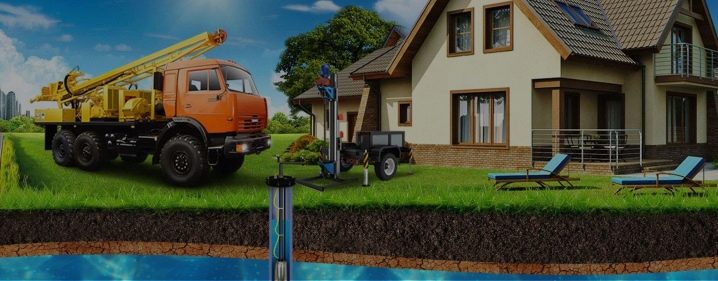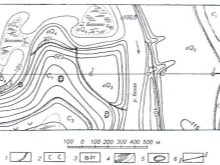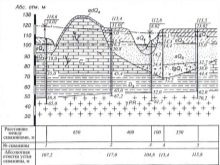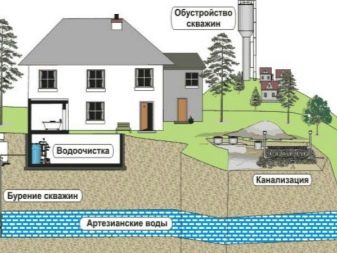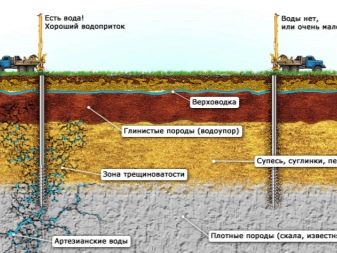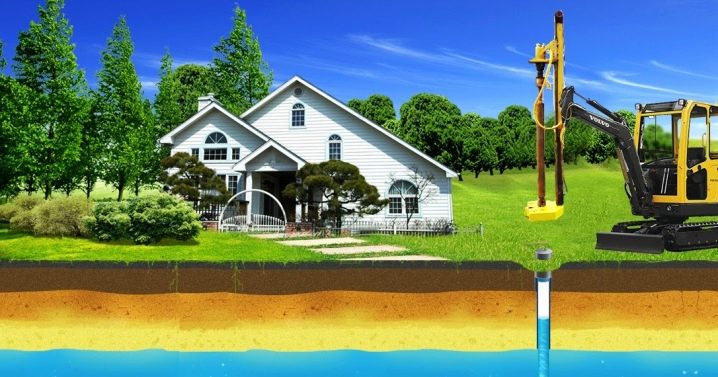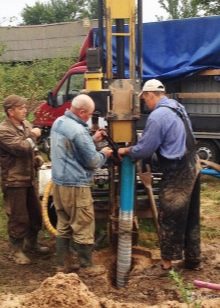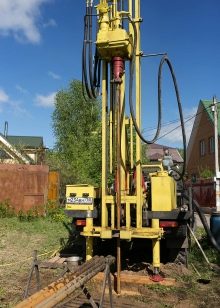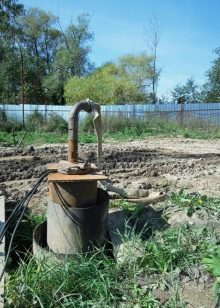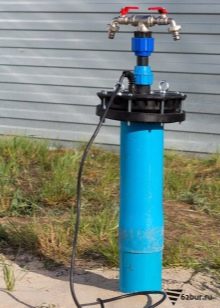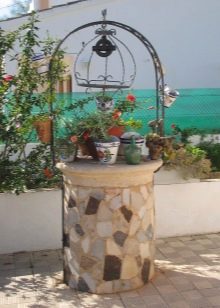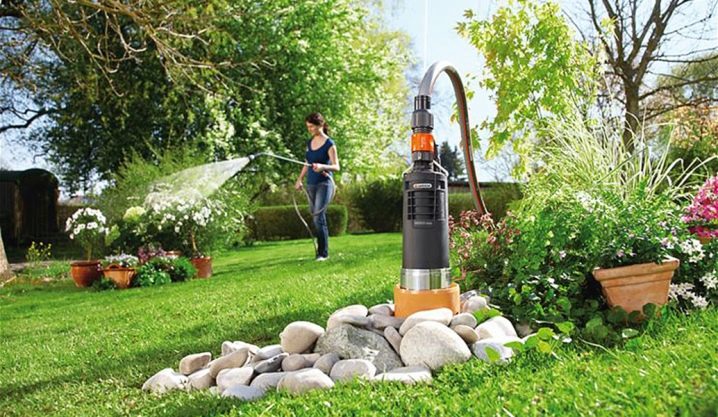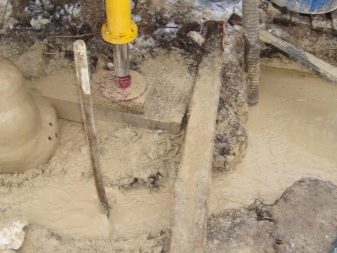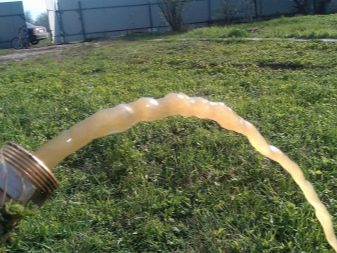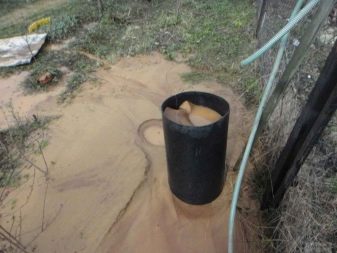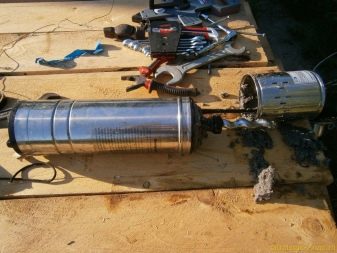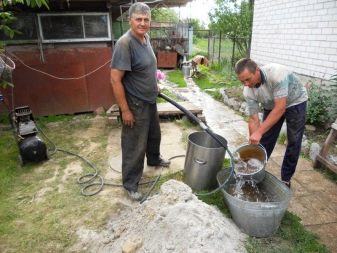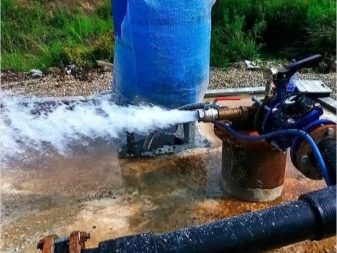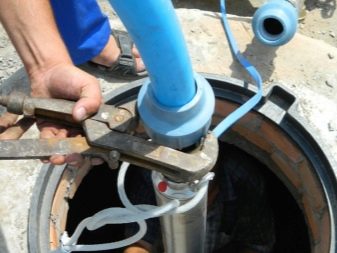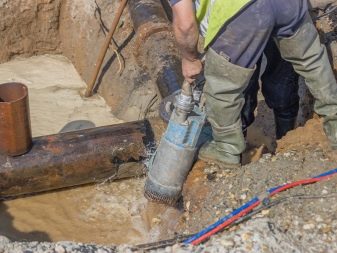Artesian wells: design features and stages of drilling
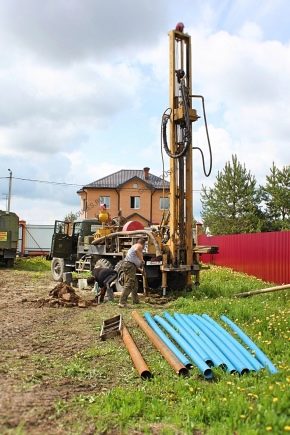
If there is no central water supply, the owners of private estates begin to search for ways to provide households with water. At the same time, the best quality and uninterrupted options are sought. The artesian well fully corresponds to such characteristics. However, the design features of the installation, as well as numerous stages of drilling work, stop many who want to get their own source. What are the features of the work, what are the nuances of documenting, we will study in detail in this article.
Specifications
According to the dictionary designation, an artesian well is considered to be a deep hole in the soil from which the water flow is pulled out under powerful pressure. The designation refers to sources of natural origin. Artificial wells are usually very deep. In these earth layers, water is subjected to pressure. Therefore, when the layers are opened, the source easily rises out.
The depth of the artesian well is greatest in comparison with other options for arranging individual water supply systems.
Each type is characterized by indicators that can be combined as follows:
- drilling depth;
- source volume;
- operational terms;
- sanitary condition of the source.
The cost of work is directly related to the depth of drilling. The indicator itself is associated with regional characteristics of the soil. The possibility of setting up a driving or sand well is not in all areas. Where the aquifers are deep, only an artesian well can be built.
Well design varies in performance. This indicator is considered to be the volume of water that is pumped out of the device for a certain time period.The basic characteristics of the operational characteristics of wells are different, but the highest indicator is at the artesian source. It is important to study the sanitary condition of the water from the well at the minimum service life. Initial studies will determine the quality of automation in water treatment systems. In sandy and driven wells, they are usually complex multistage.
The water in the artesian wells was originally of high quality, pleasant taste.
These indicators often depend on regional soil characteristics. Sometimes in artesian wells, water is supersaturated with chemical elements. For example, an excessive amount of iron leads to a brown color of water and excessive sediment. In the presence of manganese, the water gets an unpleasant smell. If there is excess potassium and magnesium in the well, the water becomes hard. In any case, even minimal automation in cleaning systems will save from turbidity and organic impurities. Untreated bacteria have properties to precipitate in the human body and cause various diseases.
In some regions, the depth of the artesian well may be more than 100 meters.To achieve the desired depth, correct casing is performed. To prevent the ingress of contaminated water from surface layers, work is performed by pipes of different diameters.
Structural features include 4 arrangement options:
- standard single tube design;
- fixed casing design;
- recess supplement called conductor;
- telescopic artesian well.
Conventional technology assumes that a small-diameter pipe is inserted into a wide pipe. But sometimes pipes of smaller diameter are installed at the first depths, the well ends with wider pipes. Pipe diameters should be reduced when passing every 70 meters. Such wells are called telescopic. Their performance is maximum among other known species. With proper organization and operation of the volume of wells can provide several private homes. But it is worth bearing in mind that wells with a depth of more than 80 meters require documentation. How to make a license for an artesian well, we analyze further.
Documenting
It is recommended to study the conditions for obtaining permission before developing a water extraction scheme.
When setting up an artesian well, several requirements should be taken into account.
- The absence of buildings in the 30-meter radius.
- Lack of sewers and sources of biological pollution within a radius of 200 meters. In the same area from the artesian well there should not be agricultural farms.
- The rig must be located 300 meters away from chemical hazards. Under these are gas stations, service stations, chemical production.
- If there is a well in the neighboring farm on the site, then between two drilling rigs there is a security zone of at least 100 meters.
- The rig must be fenced in a 30-meter radius.
If all indicators comply with the standards, then together with the application should submit a package of necessary documents.
The certificate confirming the ownership of the land. The place where the drilling is planned should be documented.
If registration is not possible due to the presence of the landowner, then the lease agreement may help with the consent of the holder of a certificate for the arrangement of an artesian well.
At the hands of the applicant must be plans: cadastral, project, passport of buildings located on the site.
These documents must be prepared prior to commencement of work for obtaining permission.
Upon completion of the arrangement, the owner of the newly created well draws up the following documents:
- project package with attached scheme and photo;
- documented security zone.
To make a license to use, you need to get all the conclusions about the safety of the design and the suitability of water in the drilled source.
It is already possible to exploit the source, but you still need to pay tax.
Advantages and disadvantages
Artesian well has a lot of positive qualities. For example, many owners of such water supply have noted the high quality of drinking water. Analysis of most artesian wells shows that water can be consumed even without prior purification.
Artesian well in the country will have the following characteristic features:
- with a high capacity of up to three cubic meters per hour, which will allow the well owner to pump water without failures;
- in the house, it will be possible to open up to 5 cranes at the same time, while the performance of the artesian well will not be related to environmental conditions, the standard indicators will remain unchanged in any season.
Excellent water quality will be maintained, regardless of the types of pollutants such as:
- sewage drains;
- fertilizer.
If there are other wells near your well, an artesian drilling rig will not affect their performance.
The artesian well has the longest service life. The use of the source is possible for 30 years. If the design of the source is two-pipe, then the indicators are doubled. These data also vary from terrain properties. The wells often have different depths. If you are going to build an artesian well, you should take into account some of the shortcomings of such sources.
A large role in reducing the positive characteristics of the properties of the soil. Because of this factor, water often has a high mineral content. Typically, the indicator is within the limits of standards, and the use of mineral water is even considered useful.Sometimes a large amount of fluorine, manganese and iron affects the increase in hardness. The problem is solved by installing a special filter.
The disadvantages of users include the need to obtain a documentary permission to use an artesian source.
A negative factor is also considered by many to be too expensive projects for drilling artesian springs. The process of arranging a column or well is less laborious. Drilling of an artesian well is impossible without a brigade of workers and special-purpose equipment.
All the listed difficulties are temporary. The practicality of an artesian well has already been proven. The source will provide long-term clean water in uninterrupted mode.
Depth calculation and location determination
To determine the approximate depth of the artesian reservoir, you can use the data schema or map. Currently, there are special monitoring centers whose employees have accurate information. Correct design will be carried out by specialists from drilling companies that have already worked to create wells for water in your area.
The number of meters deep in your future well can be determined by online maps.which can be found on the websites of companies engaged in drilling. These organizations often disseminate information based on the depth data of the hydraulic structures already erected. All the data together allow us to make the most correct idea of the required depth of the artesian well in your region of residence.
If the most accurate indicators are required, for example, to document the source, then it may not be possible to do without geological survey data. This service can be ordered from specialists with a geodesic education.
Experts will find out not only the depth of the well, but also make a plan of the soil section. Such surveys are best done in summer or winter. Conducting geological exploration at the site significantly increases the cost of drilling operations. However, coming to the well construction thoroughly, the owner of the source will provide himself and the future generation with enough water to meet all the needs of the family.
With geological survey data, you can correctly determine:
- well location point;
- location for equipment;
- place to drain the water;
- working (security) zone.
When choosing a drilling point, it is important to consider the place that is closest to putting into a trench. This will be associated with future pipelines and, therefore, with the cost of construction of the well.
For drilling, a flat platform of approximately 4x12 meters is needed. Undesirable electrical wires in the territory to two meters from the point of drilling.
Drilling and development
When all the preliminary work has been completed and permission has been obtained, you can begin drilling with a small-sized drilling rig with your own hands or with the participation of a brigade of drillers.
Technology works involves the following steps:
- rock loosening;
- sludge intake;
- installation of casing metal pipes;
- installation of water-lifting pumping units and filters.
Further arrangement implies the mandatory implementation of the following works:
- installation of the caisson, it is plastic, concrete or steel;
- installation and commissioning of electrical wiring;
- installation of an automation unit;
- pipe laying;
- design appearance of the structure.
Drilled wells are often decorated under a beautiful well. Often, gazebos are settling near the source.
However, the more complex the design, the more expensive its cost. In addition, the price of work associated with the technique used in them. The more resources involved, the more expensive the cost of drilling. Different characteristics of pumps and other electrical devices. Therefore, the final cost of the well is often different with the same used drilling rigs in neighboring areas.
Service
Despite the long service life of an artesian well, knowledge of the reasons why a source may need to be repaired will not interfere with its owner. The main complaints of the owners are reduced to degraded water quality, reduced volume.
Consider the reasons that lead to this.
- Silting The problem often occurs in artesian wells drilled in clayey soil. Unit capacity is reduced due to a dirty filter.
- Dusting This happens when casing is improperly installed. Sand will easily penetrate into the installation if the well does not have a filtration pipe.
- CloggedA problem happens if a filter with too small holes is installed. Further clogging of the filter leads to a decrease in the pressure of the supplied water.
- Pump breakdown Equipment deterioration or failure may occur due to an improperly selected pump. Technique with weak characteristics fails prematurely. But also pumping equipment can break down due to the fact that it is necessary to pump contaminated fluid. Wear and tear sometimes leads to breakage of the holding cable.
Depending on the fault, the well repair may be current or major. To the current work associated with the maintenance of the well, is cleaning the filter, replacing pumping equipment. These works are carried out by industrial organizations, which will provide a full estimate for each action of their employees.
For example, if a pump needs to be replaced, a new unit is often required. When installing in parallel, changing the transitions from the pump to the pipe, and sometimes the water-lifting pipe itself. A new cable is connected to the pump. If a cable breaks, a sunken pump must be removed. Often in such situations, a drilling rig is used.Sometimes, due to the fall of the pump, well maintenance is required.
The filter is cleaned in several ways: by purging, flushing or pumping. Pumping is considered the most accurate method. At the same time, auxiliary tools such as ruffs, scrapers, swabs, drill strings, as well as special reagents are used.
Overhaul of artesian wells is required if casing is damaged. Used equipment is removed, and a new column is installed in the well.
Without removing the casing is not enough if there was a destruction of the bottom filter. As a repair option, the installation is made inside the well of another installation, but of a smaller diameter. This repair often leads to a decrease in water loss artesian wells.
Despite all the difficulties, this method of providing water to a private house is becoming more and more popular. This means one thing - the advantages of this type of security are still greater than the disadvantages.
On drilling water wells, see the video below.
